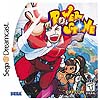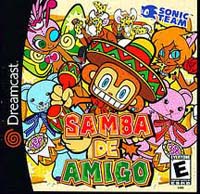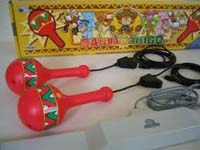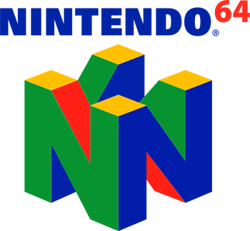

Just as it had done with its Super Nintendo, Nintendo arrived to the next generation party late. A full year and a half after the Saturn released in the U.S., the Nintendo 64 (N64) came out on September 26, 1996. It was to launch at $249.99, but a last minute price drop to $199.99 put it on even ground with the PlayStation's recent price reduction. Fans had been clamoring for a new system, especially since the Saturn and PlayStation had been on the market for over a year and the Super Nintendo was looking long in the tooth by then. The N64 was a powerful console that focused in on 3D graphics, much like the PlayStation did. Having more graphical power than Sony meant its games could look and perform better, but its real limitation was its storage medium: cartridges. Nintendo opted not to adopt CD-ROM technology like its competitors. It cited load times as something it wanted to avoid, but truthfully it probably came down to economics. Since Nintendo was the sole manufacturer of the cartridges, Nintendo made money from all third parties creating games on the system - regardless if they sold to customers or not. This was a short-term blindness that would bite them in the end due to so many third parties moving projects from the N64 to the PlayStation. Development was considerably less and there were huge benefits to pressing discs. Not only was cost lower, but if a game was a surprise hit, more copies could be created in as little as a couple weeks. If a cartridge game sold better than expected, the reorder time would take up to 2 months and by then the sales window could have very well closed.
The N64 launched with just 2 games in North America, Super Mario 64 and Pilotwings 64. Mario 64 was truly an amazing game. It pioneered the way 3D games are created to this very day. With a fully realized 3D world to explore and full control over the 3D camera, Mario 64 dazzled gamers with a beautiful virtual world to explore and secrets to discover. The revolutionary analog stick built into the controller allowed easy 360-degree motion and full control over Mario's actions. This was truly a system seller and in the U.S. Nintendo managed to move more N64s than Sony had done in an entire year. The battle for supremacy was tightly fought for the first year, but Sony soon took the lead thanks to its worldwide developer support. For every game released on the N64, seven were released on the PlayStation.
In the spring of 1997 Nintendo released Mario Kart 64, which would go on to sell over 10 million copies worldwide. This game started the trend of "couch multiplayer". Since the N64 had 4 controller ports built-in to the system, games such as this would allow for 4-player simultaneous competition. Mario Kart became one of the most played games on the system, especially in colleges across the country. Later that year, GoldenEye 007 was released and became one of the biggest first person shooting games of all time. It paved the way for later games like Call of Duty. Up to four players would take part in a variety of gameplay modes to try and be the last one standing. Multiplayer gaming, such as Super Smash Bros. and Mario Party, was king on the N64, but single player games like the Legend of Zelda: Ocarina of Time, Banjo-Kazooie, and Conker's Bad Fur Day were also critical hits.
With the increased competition by Sony, Nintendo struggled to sell as many units as in prior generations. PlayStation had taken over every major market in the world, but that's not to say the N64 wasn't successful. It still managed to move 35 million systems and over 400 games were released. Nintendo's first-party efforts were some of the best ever, and many consider them to still be masterpieces to this day. Some of the best games created released for the N64 and many gamers will remember it fondly for its innovative controller and exciting games library.

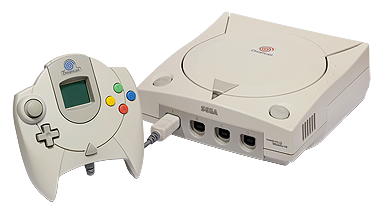
Sega had been dead for 2 years. The Saturn had failed and from 1997 to 1999 Sega was absent from the video game market. It was all-or-nothing time and they put forth one heck of a machine with the Dreamcast. This new console was a powerful beast. It came out a full year ahead of the PlayStation 2 (9-9-99, a clever date) and showcased graphics leaps and bounds above anything on the market. This new Sega had learned from its prior mistakes. Launching at $199 and packed in with a modem, Sega was not only ready to take back its market, but become the leader in the process. Its new controller featured a slot for a memory card with a small black and white LCD screen, allowing games to utilize it for basic things, like calling plays in football or a health meter in Resident Evil. Sega had all of its internal teams working on a slew of software to avoid the drought that plagued the Saturn. With a new marketing campaign, an amazing price, spectacular features, and a renewed hope, Sega gave it's all in an attempt to recapture its former glory.
Featuring one of the most spectacular system launches of all time, the Dreamcast had a slew of must-have games on day one. Games like Soul Calibur showed off the amazing 3D visuals that could only be achieved on this new system. NFL 2K, Sonic Adventure, Hydro Thunder, Power Stone, and Marvel vs. Capcom were all there at launch to showcase the amazing horsepower of the Dreamcast. Over 300,000 systems had been preordered and Sega managed to sell half a million in the first two weeks in the U.S., making it one of the most successful game system launches of all time. More amazing games were in the pipeline, including Jet Set Radio, Crazy Taxi, Tony Hawk, Soul Reaver, Phantasy Star Online, Shenmue, and Resident Evil: Code Veronica.
Sega was riding high the first year after the Dreamcast launch. With original content and a fantastic system with a great price, it was on its way to financial success. However, three things stood in its way. Sega was in financial trouble. It had taken on too much debt over the prior years when nothing was being sold, so the company was weak and it was difficult for it to secure funding for many of its games. Second, PlayStation 2 was coming out in October of 2000 in the States. Sony had been banging that drum for the past 18 months, and if Sony's good at one thing, it's marketing. It had completely taken over the gaming world with it's original PlayStation, and it made sure the world knew that the successor was coming soon and that it would be better than a Dreamcast in every way imaginable, including the ability to play DVDs, which back then was a big deal as stand-alone DVD players cost about $200 to $300. The last problem Sega had was courting third parties, most notably Electronic Arts. Without the support of one of the biggest gaming companies in the world, Sega had to hope its own first party games would pick up the slack.
In the end, the Dreamcast would die out just as suddenly as the Saturn did. March 30 of 2001 the Dreamcast ceased production and games stopped coming out. Sega managed to sell 10 million systems in only 2 years, and had they been in a stronger financial position they may very well have succeeded in becoming a major contender once again. Alas, they decided to throw in the towel and become a third-party themselves, creating games for the Xbox, GameCube, and PS2. The uncertainty of the hardware market was too much for them to take and becoming a software company seemed to make sense. Indeed, even today they are still in business creating games for the current generation of consoles, but many gamers who grew up with Sega can't help but wonder what happened to that daring company who took so many risks and had such clever marketing that they were able to take on the goliath, Nintendo, and almost win. Most of the innovative software and creative games that Sega used to produce back in the 16-bit and 32-bit days are a thing of the past. They mostly release licensed games or those that are developed by other studios that they have agreements with or that they have purchased. Who knows if Sega will ever reclaim its former glory as a software powerhouse, but it's almost assured that it will never again release a home console.
 2.
2. 
 4.
4. 
 6.
6. 
 8.
8. 
 10.
10. 
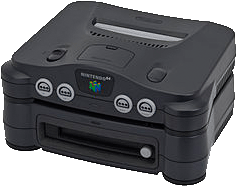 Never released in any territory except Japan, the N64DD is a disk drive that attached to the bottom of the Nintendo 64 system. It had larger storage than cartridges and allowed for games to write to the disk. A grand idea for the use of the device was to allow games to continue on even when the player wasn't actively playing. If a player chopped down a tree, it would stay chopped down forever until a new one grew in its place. Sadly the device never really took off and only a handful of games were ever released for it.
Never released in any territory except Japan, the N64DD is a disk drive that attached to the bottom of the Nintendo 64 system. It had larger storage than cartridges and allowed for games to write to the disk. A grand idea for the use of the device was to allow games to continue on even when the player wasn't actively playing. If a player chopped down a tree, it would stay chopped down forever until a new one grew in its place. Sadly the device never really took off and only a handful of games were ever released for it.
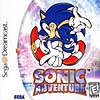 2.
2. 
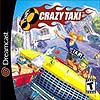 4.
4. 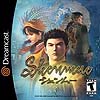
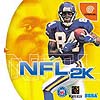 6.
6. 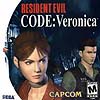
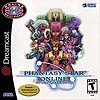 8.
8. 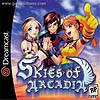
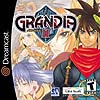 10.
10. 